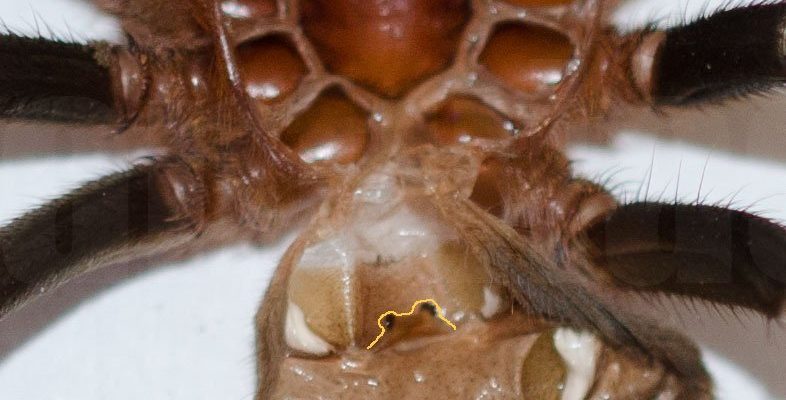
Identifying the sex of a tarantula is crucial for several reasons, especially if you’re a pet owner or a breeder. You may want to breed them, keep them in a mixed-gender environment, or just satisfy your curiosity about the critter walking around your terrarium. Let’s dive in and break down how to decode the clues that nature gives us, and I promise to keep it simple and clear.
Understanding the Basics of Tarantula Sexual Dimorphism
Tarantulas are fascinating creatures, and part of their allure lies in their sexual dimorphism—the difference between males and females. Most species exhibit noticeable differences in size, coloring, and even behavior. Understanding these differences is the first step in figuring out the sex of your tarantula.
Generally, female tarantulas are larger and bulkier than their male counterparts. Imagine a female tarantula as a strong, sturdy figure, while the male is more like a sprightly dancer, focused on finding a mate. This size difference is due to females needing more body mass to produce eggs. In many species, the males will also have longer, more slender legs compared to females.
Another interesting note is that some females can live for many years—up to 25 in some cases—while males typically have a much shorter lifespan of around 5 to 10 years. This provides a unique perspective on their growth and development, helping you understand the dynamics between them even better.
Physical Characteristics to Look For
When you’re trying to tell the sex of a tarantula, you’ll want to start by examining its physical features closely. Here are some key characteristics to help you differentiate between them:
- Size: Females are usually larger, with thicker bodies.
- Coloration: Males often have brighter, more vivid colors, while females are more muted.
- Leg Length: Males typically have longer, thinner legs, making them look more graceful.
- Pedipalps: This is a telling feature! Males have larger, more bulbous pedipalps used for mating.
If you’re looking closely at a tarantula, pay particular attention to the pedipalps. These appendages can look like little claws or boxing gloves and are crucial for males to hold onto females during mating. If they seem exaggerated and bulbous, you may be looking at a male.
The Role of Spermatheca in Females
Now, let’s talk about a feature that specifically indicates a female tarantula: the spermatheca. This is a special organ where females store sperm after mating. While you might not be able to see this directly, it’s essential for reproduction. In many cases, if you examine a female closely (with care), you might notice slight indentations on her abdomen where this organ is located.
Most notably, females will exhibit a rounded abdomen that tends to be more solid than males. This tells you that she’s ready for potential reproduction. If you’re lucky enough to have a pet tarantula, keeping an eye on these details could give you insight into her health and reproductive status.
Behavioral Indicators
Honestly, behavior can tell you a lot about your tarantula’s sex, too! Male tarantulas exhibit certain behaviors, particularly when they’re ready to mate. You might notice them being more active, wandering around the terrarium in search of a female.
In contrast, females tend to be more sedentary, especially if they’re in a secure environment. They often stay in their burrow or a favored spot longer than males. If your tarantula seems to be on a mission, darting around, it’s likely on the lookout for a mate!
Best Methods for Sexing Tarantulas
There are a few reliable methods to determine the sex of a tarantula. Each comes with its own set of pros and cons, so let’s break them down:
- Visual Inspection: As discussed earlier, checking size, color, and pedipalps can give you a good indication.
- Molting: After a tarantula molts, you can look for gender-specific traits on the molt itself.
- Surgical Methods: This is less common but involves internal inspection by an experienced vet.
Visual inspection is your best bet for most backyard breeders and enthusiasts. However, if you’re looking for accuracy, waiting for a molt can provide more definitive information. Keep in mind that every method has its risks and limitations, so choose what feels right for you.
When in Doubt, Consult an Expert
If you’re still scratching your head after trying these methods, don’t hesitate to reach out to an expert or a community of tarantula enthusiasts. Online forums, local pet stores, or tarantula breeders can offer valuable insights. Sharing pictures and experiences can lead to accurate identification.
You might even find local tarantula keeping clubs or groups where members can share their experiences. There’s a whole community out there that loves talking about these fascinating creatures!
Why It Matters
Identifying the sex of your tarantula isn’t just a fun trivia question; it helps you understand their behavior, breeding ability, and even how to care for them better. Knowing whether you have a male or female can impact your approach to feeding, habitat needs, and interaction.
It can also affect your future plans if you’re considering breeding. Males and females not only have different lifespans but also different habits and temperaments. Keeping this in mind helps create a healthier, happier environment for your pet.
So, whether you’re a seasoned tarantula keeper or a total newbie, knowing how to tell the sex of a tarantula enriches your experience.
In conclusion, figuring out the sex of a tarantula might seem daunting at first, but with these tips, you’ll be well on your way to being an expert yourself! Remember to take your time, observe closely, and don’t hesitate to seek help. Happy tarantula keeping!

